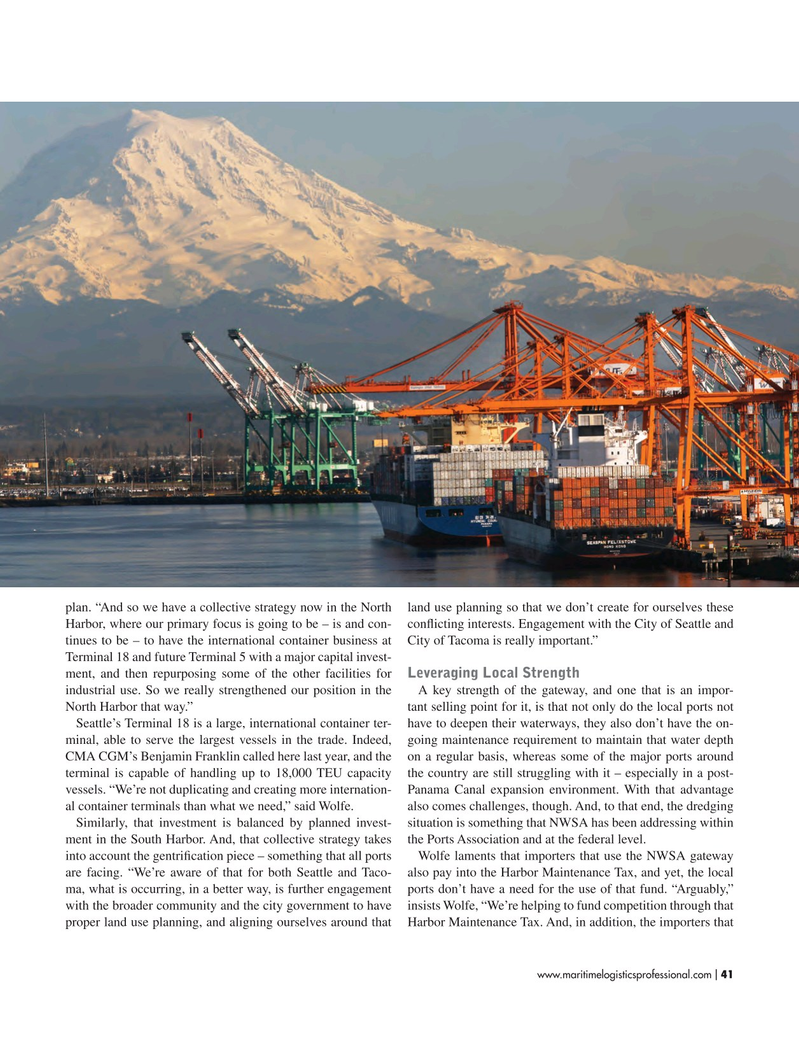
Page 41: of Maritime Logistics Professional Magazine (Jul/Aug 2017)
PORTS & INFRASTRUCTURE
Read this page in Pdf, Flash or Html5 edition of Jul/Aug 2017 Maritime Logistics Professional Magazine
plan. “And so we have a collective strategy now in the North land use planning so that we don’t create for ourselves these
Harbor, where our primary focus is going to be – is and con- conficting interests. Engagement with the City of Seattle and tinues to be – to have the international container business at City of Tacoma is really important.”
Terminal 18 and future Terminal 5 with a major capital invest- ment, and then repurposing some of the other facilities for Leveraging Local Strength industrial use. So we really strengthened our position in the A key strength of the gateway, and one that is an impor-
North Harbor that way.” tant selling point for it, is that not only do the local ports not
Seattle’s Terminal 18 is a large, international container ter- have to deepen their waterways, they also don’t have the on- minal, able to serve the largest vessels in the trade. Indeed, going maintenance requirement to maintain that water depth
CMA CGM’s Benjamin Franklin called here last year, and the on a regular basis, whereas some of the major ports around terminal is capable of handling up to 18,000 TEU capacity the country are still struggling with it – especially in a post- vessels. “We’re not duplicating and creating more internation- Panama Canal expansion environment. With that advantage al container terminals than what we need,” said Wolfe. also comes challenges, though. And, to that end, the dredging
Similarly, that investment is balanced by planned invest- situation is something that NWSA has been addressing within ment in the South Harbor. And, that collective strategy takes the Ports Association and at the federal level.
into account the gentrifcation piece – something that all ports Wolfe laments that importers that use the NWSA gateway are facing. “We’re aware of that for both Seattle and Taco- also pay into the Harbor Maintenance Tax, and yet, the local ma, what is occurring, in a better way, is further engagement ports don’t have a need for the use of that fund. “Arguably,” with the broader community and the city government to have insists Wolfe, “We’re helping to fund competition through that proper land use planning, and aligning ourselves around that Harbor Maintenance Tax. And, in addition, the importers that www.maritimelogisticsprofessional.com 41
I

 40
40

 42
42
